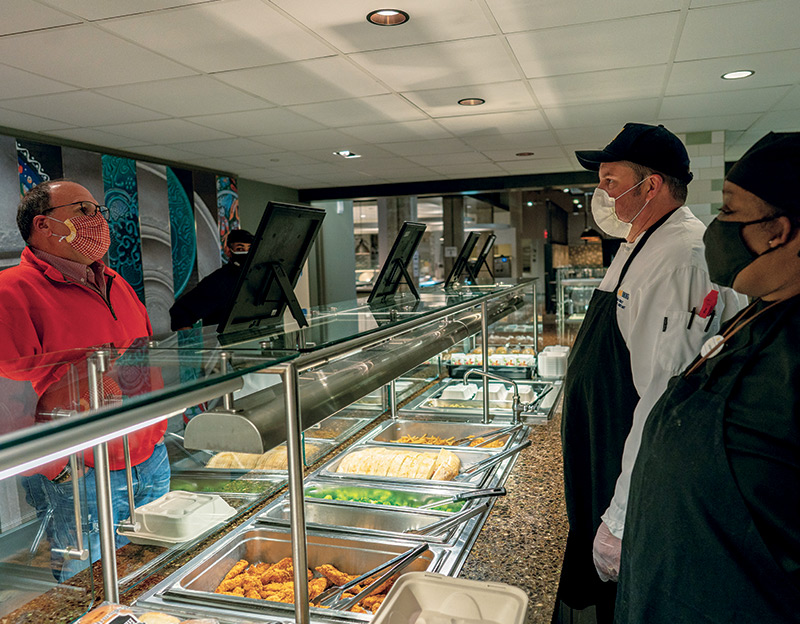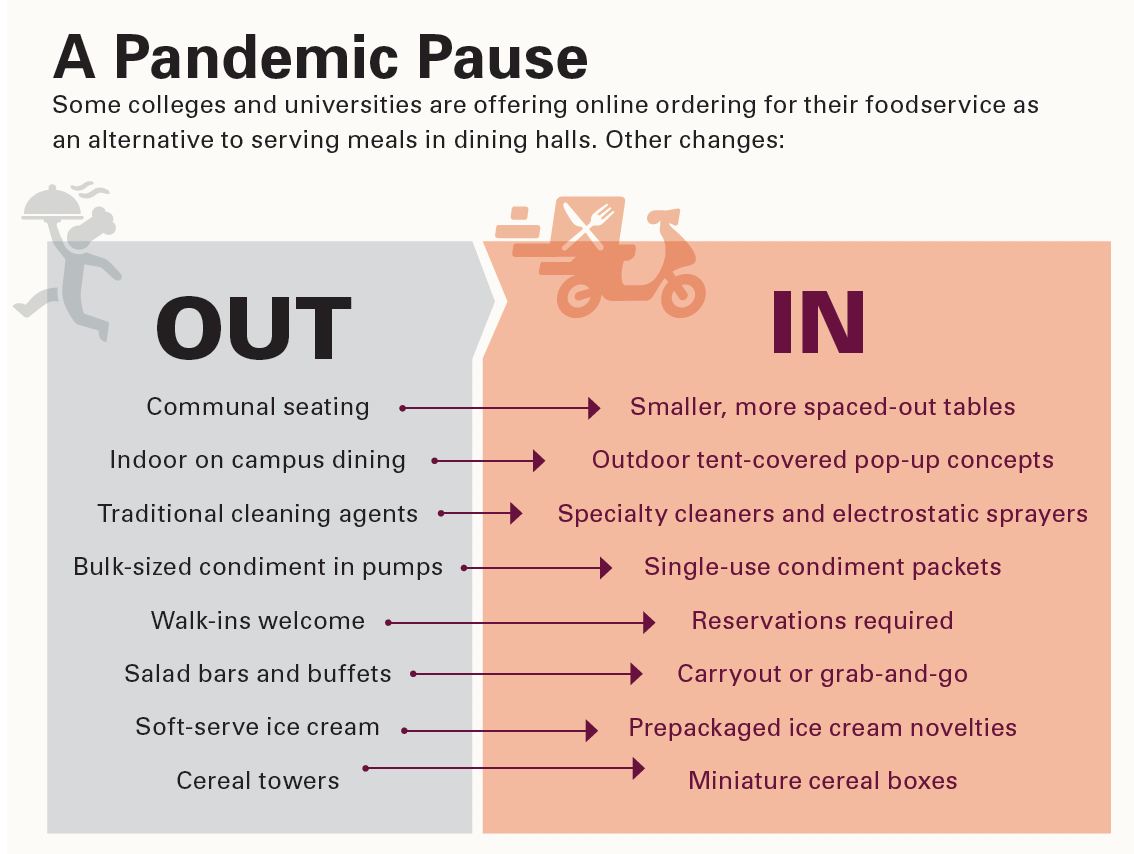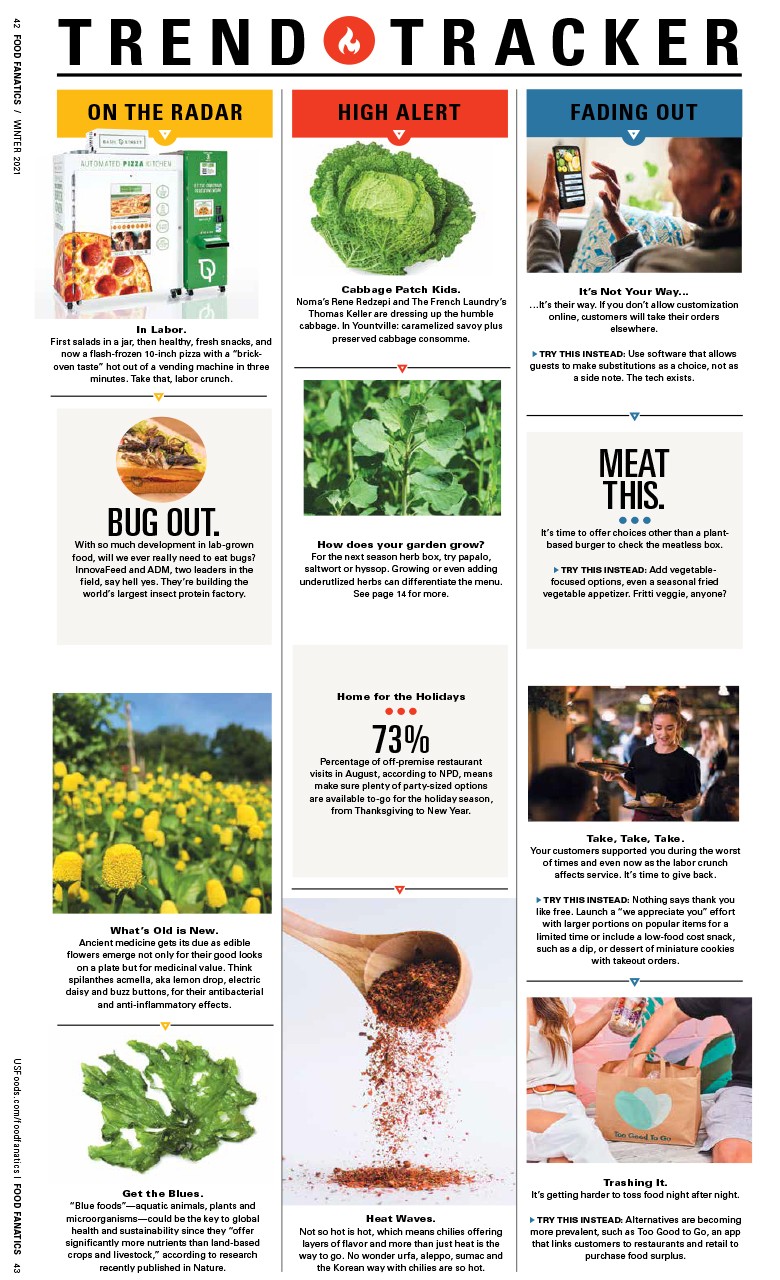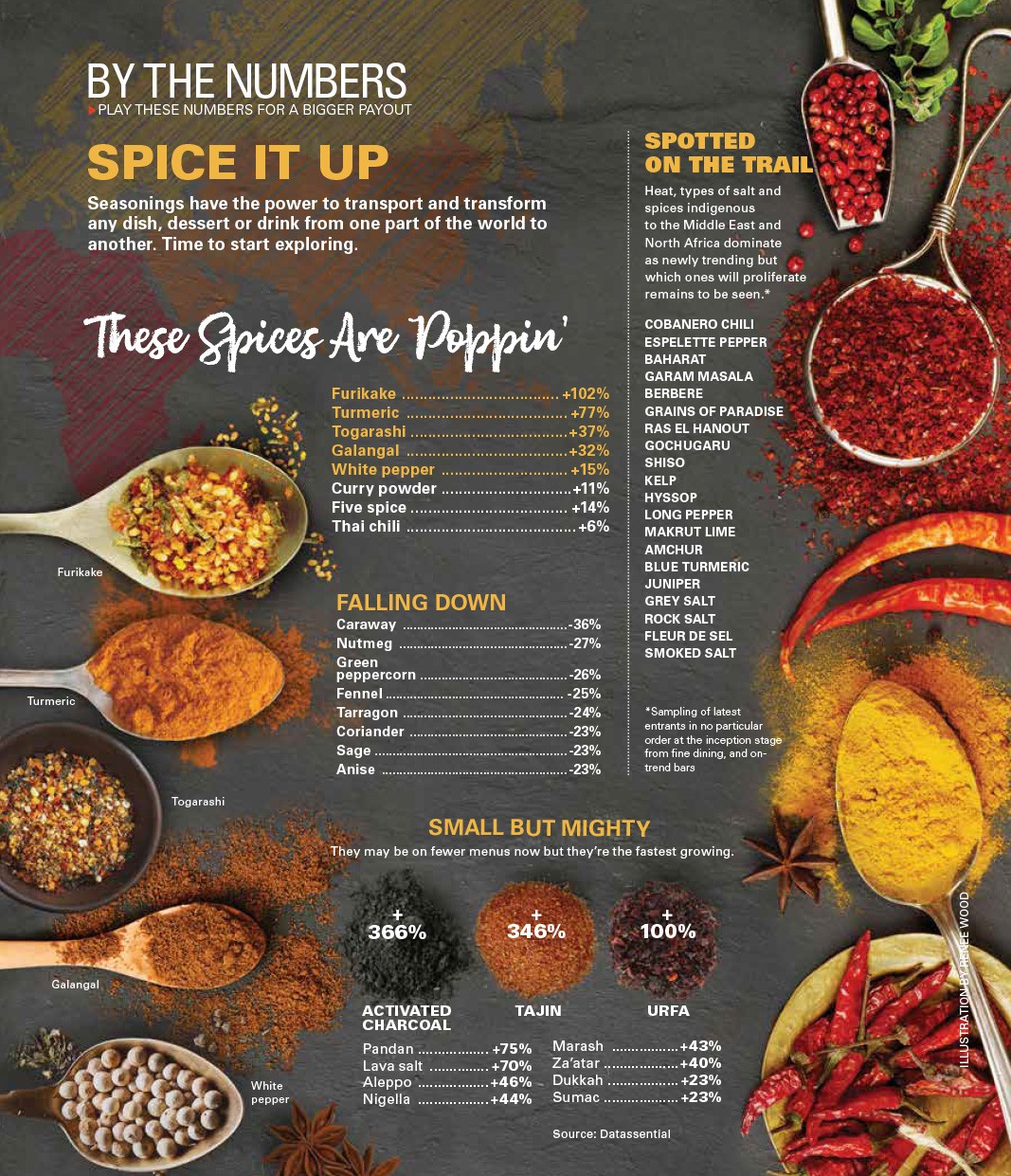A New Lesson Plan
A pandemic makes college students good for business
Today’s Gen Z college students are, in a word, conscious.
Not just cost-conscious, but health-conscious, earth-conscious and socially conscious. Because of the pandemic, “safety-conscious” now deserves a spot on the list.

Dining halls once known for their unlimited models – all-you-can-eat, whenever, wherever – are switching gears due to safety recommendations, and trading ubiquitous self-serve buffets for carryout, prepackaged or staff-served meals. While campuses are exploring ways to keep their share of student diners, opportunities exist for other foodservice models to grab a slice of this audience – which is more crucial than ever, considering the financial impact of the pandemic.
Here’s a look at what’s driving college students’ dining choices right now, on and off-campus.
PRICING
This year’s high unemployment rates are impacting student spending habits. Many have returned to campus with less spending money, whether that’s because they had to forgo their usual summer job, a reduction of on-campus employment or a parent furloughed or laid off. This leaves an already deal-seeking demographic even more hungry for value.

“The retail arm of Michigan dining has actually been working on a whole menu of retail to-go options that are a little more price-conscious in response to that,” says Lindsay Haas, culinary and nutrition support specialist at the University of Michigan in Ann Arbor. “The other thing we talked about quite a bit is when you walk into an all-you-care-to-eat, you feel like you can get your money’s worth. For carryout, we are being very thoughtful about our portions, so those who can’t dine in don’t get a lesser experience.”
▷ ANOTHER IDEA: Offer a friend-referral student discount or larger portions for lower food cost dishes, such as pasta.

HEALTHY CHOICES
Healthy choices – already popular with Gen Z – have become even more appealing. Ken Toong, executive director of auxiliary enterprises at University of Massachusetts Amherst, saw a 20% increase in salad and comfort food consumption this summer. “In this pandemic, students want to eat healthier in order to enhance their immune systems,” Toong says. “We define ‘healthy’ as consuming more plant-forward items – also less sodium, less sugar and less saturated fat.”
▷ ANOTHER IDEA: Step up meat alternatives and offer roasted vegetables as the center-of-the-plate, with grains as dinner options.
COMFORT FOODS
Being away from home during a pandemic – especially for homesick freshmen – can be stressful, so students will also seek familiar comfort foods. Café Rule, located near Lenoir-Rhyne University in Hickory, North Carolina, has rolled out weekly promotions around perpetually popular dishes: fried chicken on Mondays, tacos on Tuesdays and discounted pizzas on Wednesdays. “Every college student loves pizza, and the wood-fired oven we have creates an incredible flavor along with our fresh, unique toppings,” says Paul Nance, director of hospitality operations. Offering deals, such as buy one and get one half-priced, also helps.
▷ ANOTHER IDEA: Add chicken soup. It’s the perceived cure-all, sick or not. Or make it a special along with a vegetarian option.
SUSTAINABILITY
Eco-friendliness is important to today’s college kids, but they also understand that some degree of sustainability must be sacrificed for safety in the short term. For instance, incentives for bringing reusable bags or mugs for drink refills may have to go on hiatus, and disposable packaging use has skyrocketed with increased carryout and delivery. Prioritizing compostable or recyclable materials when possible is a win for both safety and sustainability. “We expect two-thirds of our customers will need to be carrying food out ... so we worked with our suppliers to source compostables where possible,” Haas says. “There is a lot of fear we are going to run into supply chain issues. Some disposables have been really hard to get our hands on.”
▷ ANOTHER IDEA: Clearly communicate on your website, menu and packaging your commitment to sustainability and efforts to handle the impact of the pandemic on packaging.
SAFETY
Food safety wasn’t top-of-mind for most college students pre-COVID, but it certainly is now. Even as restaurants reopen their dining rooms, many students still prefer carryout or delivery to reduce possible exposure, operators say. Delivery orders have more than doubled at Pono Ono Poke in Evanston, Illinois, near Northwestern University, says owner Jack DeMar, and though the indoor dining space is open, most walk-in customers still take orders to-go. “(In a counter-service operation,) there isn’t that value-added of full service, so I don’t see a large incentive to dine in my restaurant now,” DeMar says. “People are putting greater weight on safety than being able to stay in the restaurant.” Consider what visible safety cues you can give customers, such as stapling bags shut or sealing clamshells with stickers. “We’re taking extra effort to make sure to-go items are sealed in a way that they can’t be tampered with,” says Lizz Bommarito, operations manager at Los Angeles-based Bowlila, located near University of California, Los Angeles.
▷ ANOTHER IDEA: In addition to reiterating safety protocols in the restaurant, remember to convey the efforts on social media, whether it’s a photo of staff cleaning or a video on washing hands.
MORE MONEY MAKERS
 » Creative catering
» Creative catering
Depending on campus rules, classes and clubs may still need catering for socially distanced events. Some of the most popular offerings of the past – build-your-own bowl or burrito buffets, for example – won’t fly. Instead, consider bento boxes or lunch boxes with individually portioned condiments, plus contactless delivery or pickup.
» Instagrammable gear
With customers less likely to hang out indoors, consider tucking print collateral (think cards or coupons with funky fonts, funny sayings or cute illustrations) into your to-go or delivery orders to generate social media snaps. Or make your “mask required” signage worthy of a photo op, with humorous phrasing or artwork created by a local artist or art student.
» Grocery add-ons
Offer grocery add-ons to delivery and carryout orders to help reduce outings and contact with others. Options could range from simple pantry staples to curated snack collections or microwaveable meal kits.



